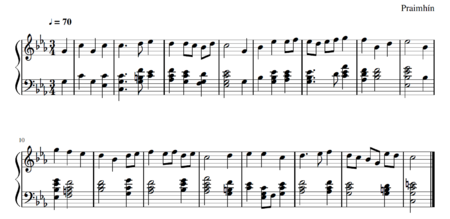Verse:Hmøøh/King Sămtsay Song: Difference between revisions
m (→Music) |
mNo edit summary |
||
| (One intermediate revision by the same user not shown) | |||
| Line 11: | Line 11: | ||
'''''Fi Chnur Păchnay Sămtsay''''' | '''''Fi Chnur Păchnay Sămtsay''''' | ||
''Răsüel bruang mi spey e Sămtsay ăchemloa;'' | ''Răsüel bruang mi spey e Sămtsay ăchemloa;'' | ||
''Ănngun ef | ''Ănngun ef hăltcäw te prien min noy smaw tsoa.'' | ||
''Răłow ya | ''Răłow ya șă'or e tsor hües te slăngay,'' | ||
''Ătsäs șa- | ''Ătsäs șa-tăngoa ef păchnay bang Sămtsay!'' | ||
</poem> | </poem> | ||
{{col-break}} | {{col-break}} | ||
Latest revision as of 19:01, 18 March 2024
The King Sămtsay Song (Windermere: Chnur Păchnay Sămtsay /xnuɐ pəxˈnaj səmˈtsaj/) is the national anthem used in the Windermere Commonwealth countries: the United States of Bjeheond, Tumhan, Pategia, Yocneam, and Quintlopetl.
Lyrics
[Under construction!]
Only the first verse is used in modern usage.
|
Fi Chnur Păchnay Sămtsay |
The King Sămtsay Song |
Music
In Bjeheond, the anthem is usually accompanied by konnakol and is in a tălea known as Tălea Deașad, same as the Carnatic desadi tala. The tune was written by Talman-Bjeheondian experimental composer Prăfin of Balang.
In Quintlopetl, the anthem is sung to a tune composed by Etsoj Jopah.
